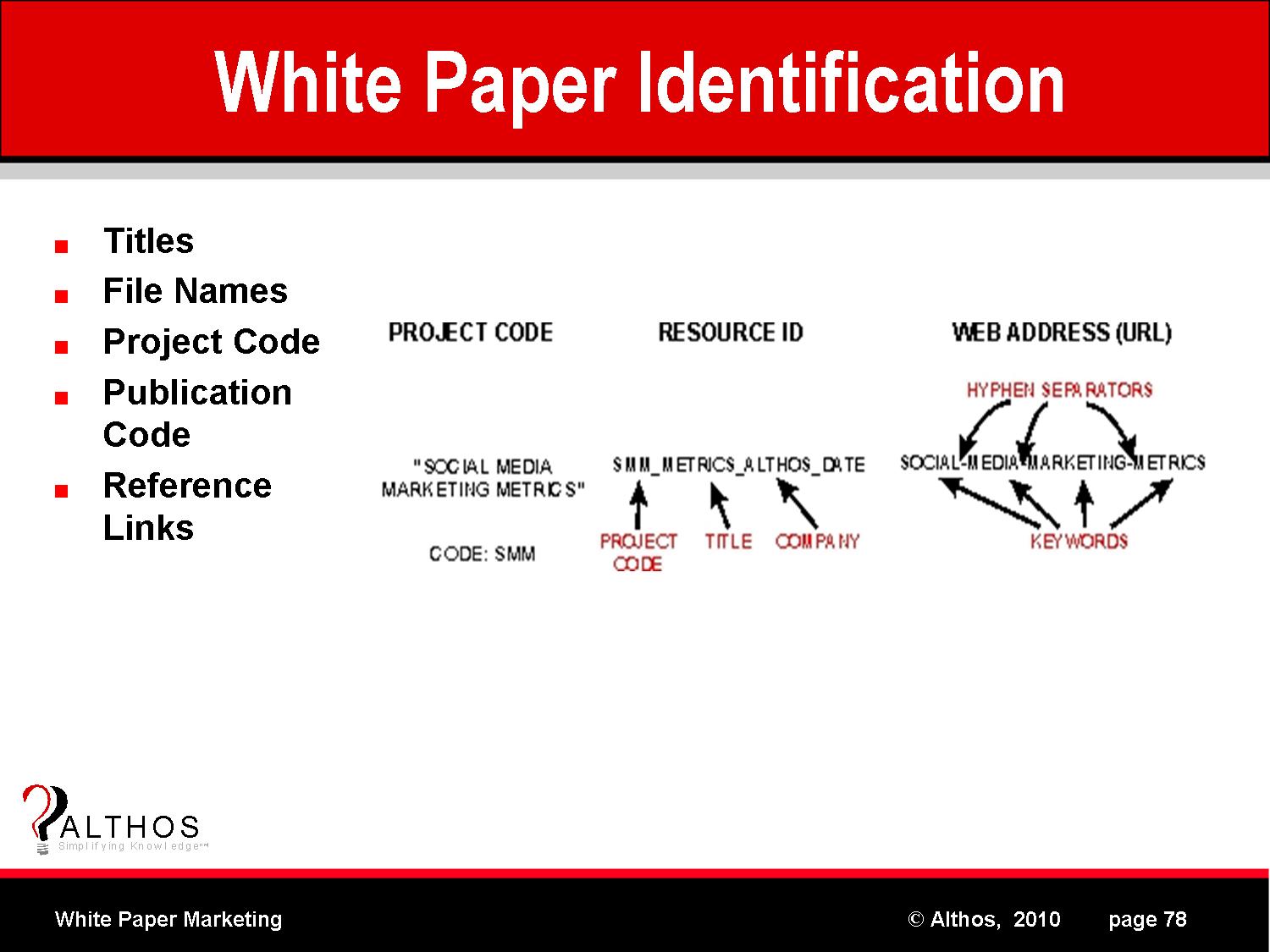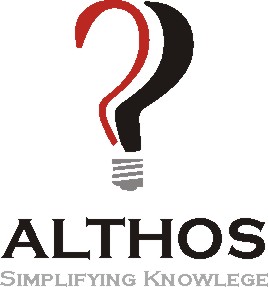 | ||
 White Paper Marketing Management |
 White Paper Content Management | |
White
paper identification is the
assignment of labels or codes that uniquely identify the document and any
variations. Titles and file names may not be enough to identify a white
paper. Additional codes or registered identification numbers (such as ISSM)
may be helpful to uniquely identify documents and their revisions.
While setting up a white paper identification system can be a tedious process, having a systematic structure to naming projects and files can save a lot of time. Files and resources that are associated with a white paper may be preceded with project codes so if they are misfiled, they are easier to find. White Paper Project - White papers are developed as a set of steps (project) and each white paper project may be assigned a project name. The project name is usually a code name (not easily identifiable) that can be easily remembered by the project (such as a movie character name). A white paper project code may be a shortened representative name of the project (such as SMM for Social Media Marketing). The project code may be included within each name to help identify and sort documents. White Paper File Name - The name for the white paper file may be composed of multiple elements including the project code, contributing company name, title and date of publication. For example; a social media marketing white paper created by Althos covering social media metrics on the 2nd of August 2010 may be given the file name “SMM_Althos_Metrics_2010_08_02”. Because the project code precedes the file name, all files that start with the project code SMM_ will be grouped together when searching or opening files. This can be extremely helpful when resources need to be referenced. Publication Code (Product ID) - A publication code is a label that uniquely identifies a document and its specific version or revision (a part number). White papers may have multiple versions for different audiences and multiple revisions to indicate the content is current (recent publication date). The publication code may be included on the white paper to help readers identify which document and version of the document they have received. Summary Web Page Address (URL) - Summary web address names may be designed to allow for easy identification and to help with search engine discovery and categorization. This means that the web address may be composed of keywords that are separated by a hyphen (-) rather than underscore (_) as search engines tend to better separate keywords using hyphens. Web addresses that do not contain separators (such as “SocialMediaMetrics”) are unlikely to be separated (“Social Media Metrics”) and understood by search engines. Reference Link Identifiers - Reference link identifiers are unique labels or codes that can be used to identify each link that is included in a white paper. Reference link names and identifiers may be added to a list of references that will be linked from the white paper. The marketing manager needs a list of reference links to setup link tracking if desired. Trackable reference links may be created in web analytics programs (such as www.Google.com/analytics) which can be included (embedded) within the white paper, allowing for the creation of usage reports (link clicks). Link tracking codes may be designed to include white paper identifiers and category types. For example, a link code of SMM_Tutorial could be used to indicate that a tutorial link from the social media marketing white paper was clicked. | ||
 more details |
White Paper Marketing Book
White Paper Marketing, More Sales Leads, Less Effort explains how to use white papers to generate lists of highly qualified sales prospects while providing valuable and well received content to readers. Readers will learn how to develop, promote, and track the effectiveness of white paper marketing. $34.99 Printed, $29.99 eBook |
